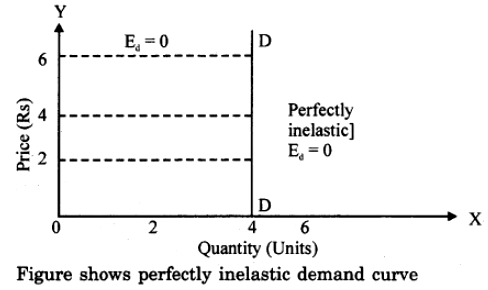(i)

This above given figure is a diagrammatic representation of perfectly elastic demand. Curve DD is perfectly elastic demand curve that is parallel to axis OX. It represents that when the price is Rs.4, the demand could be 10, 20 or 30 units. Any miniscule reduction in its price form, makes the demand infinite and a small rise in price results in fall in demand to zero. In this situation, elasticity of demand (Ed) = (∞).

Above given diagrammatic representation is of perfectly inelastic demand. Here, the demand curve DD is parallel to OY-axis. If the price is Rs. 2, demand is for 4 units. When price increases from Rs 4 to Rs. 6, the demand remains the same i.e., 4 units. Thus, change in price does not show any effect on demand. In this situation, elasticity of demand (Ed) is zero or Ed = 0.